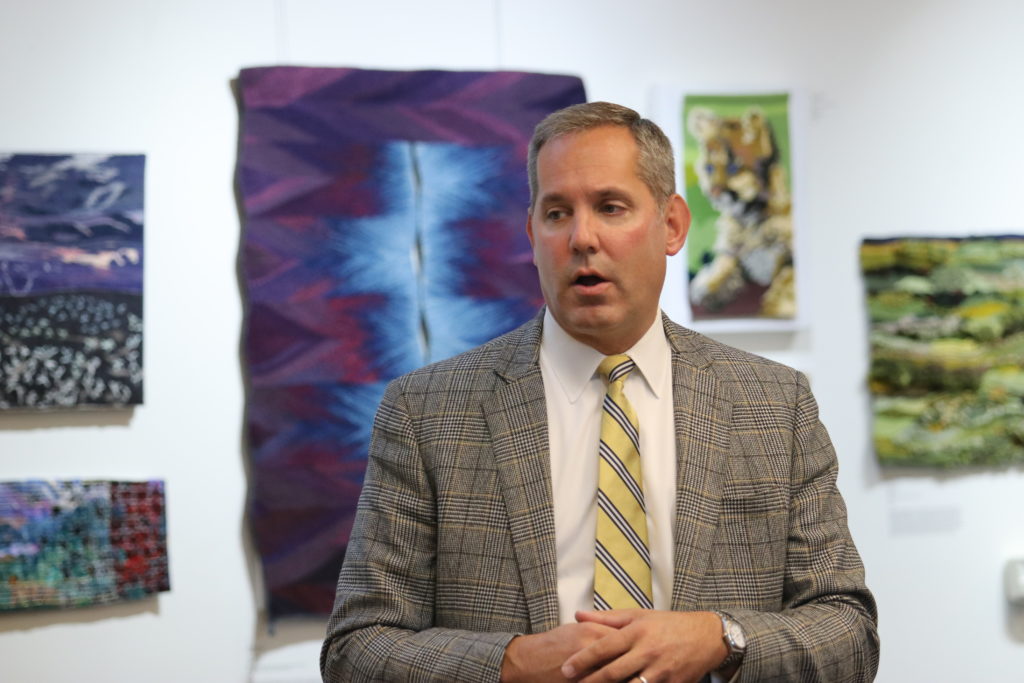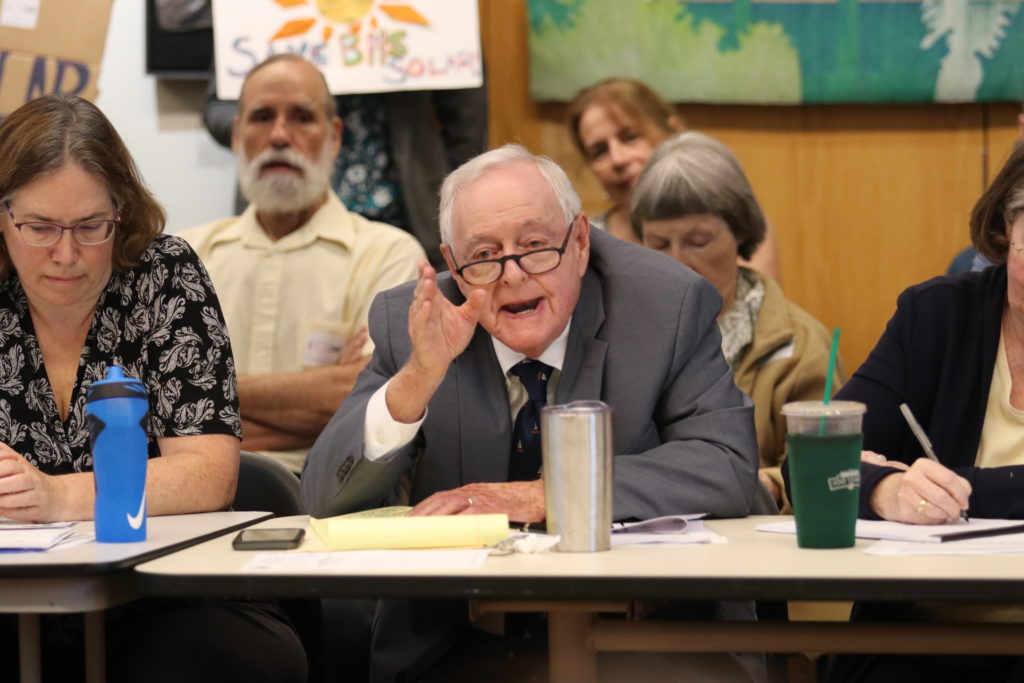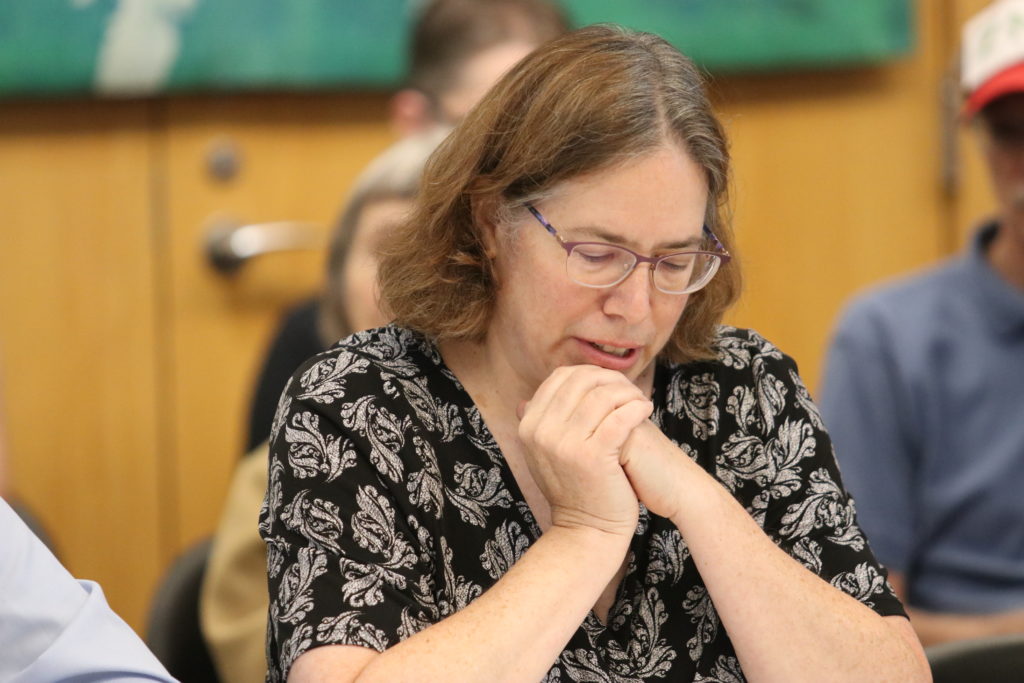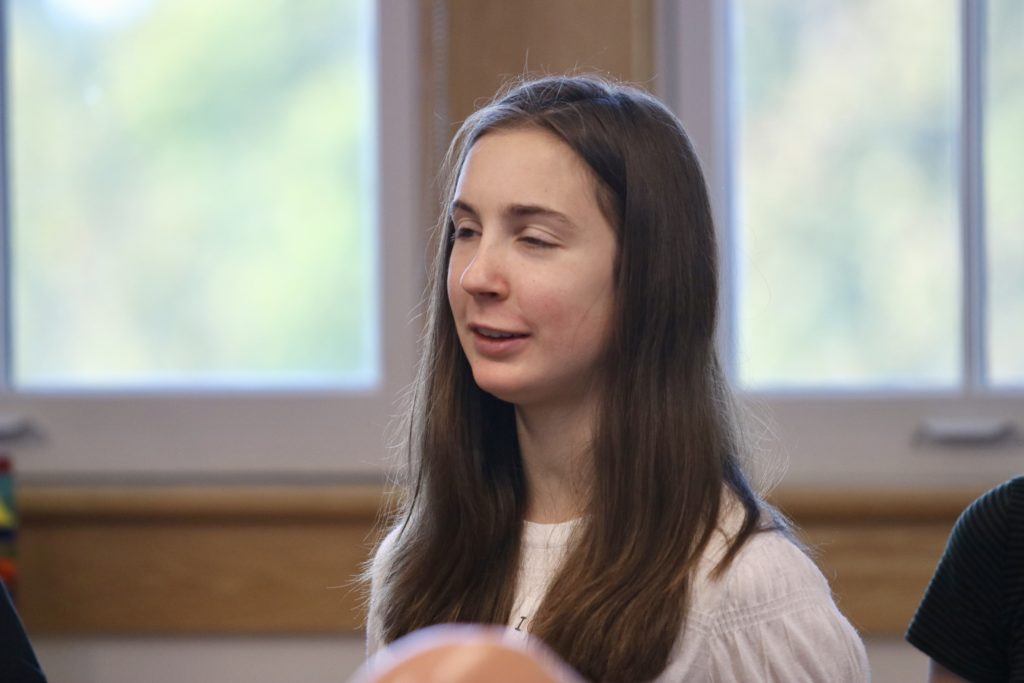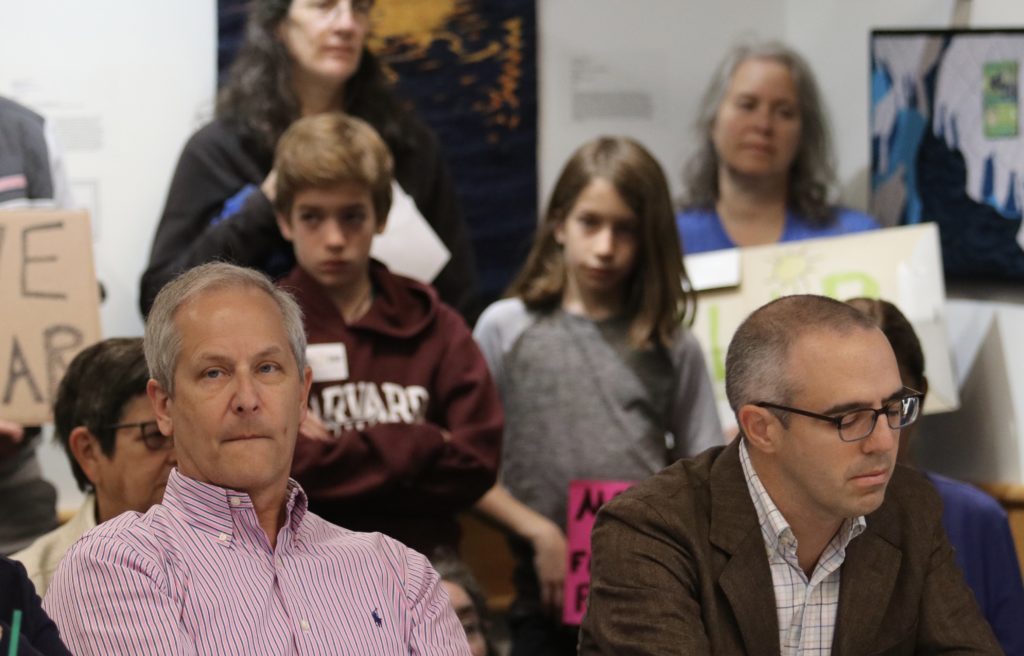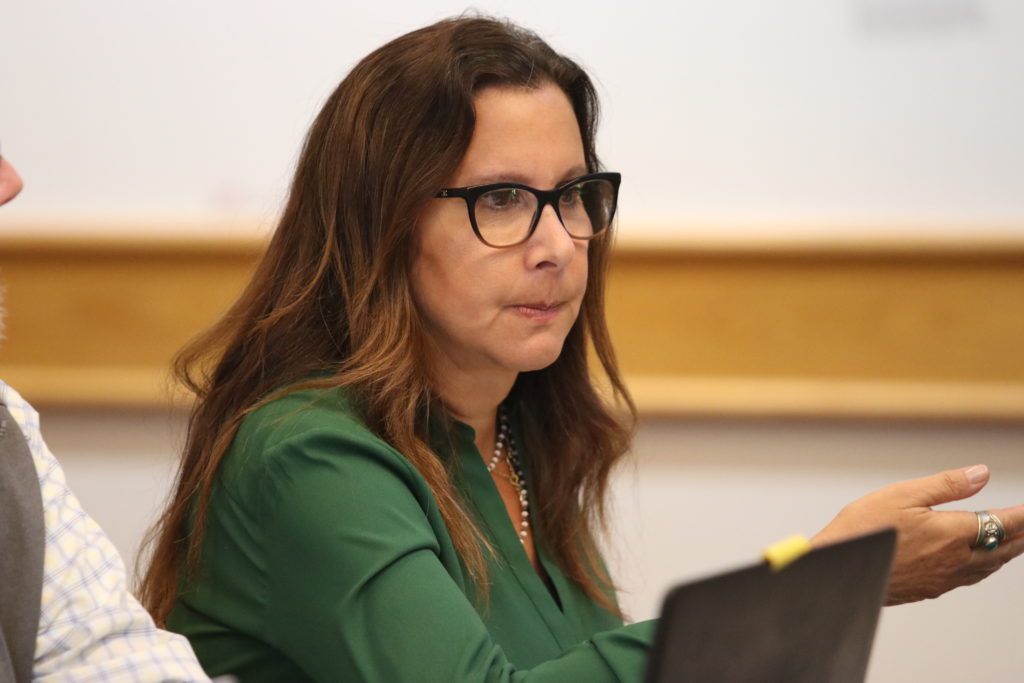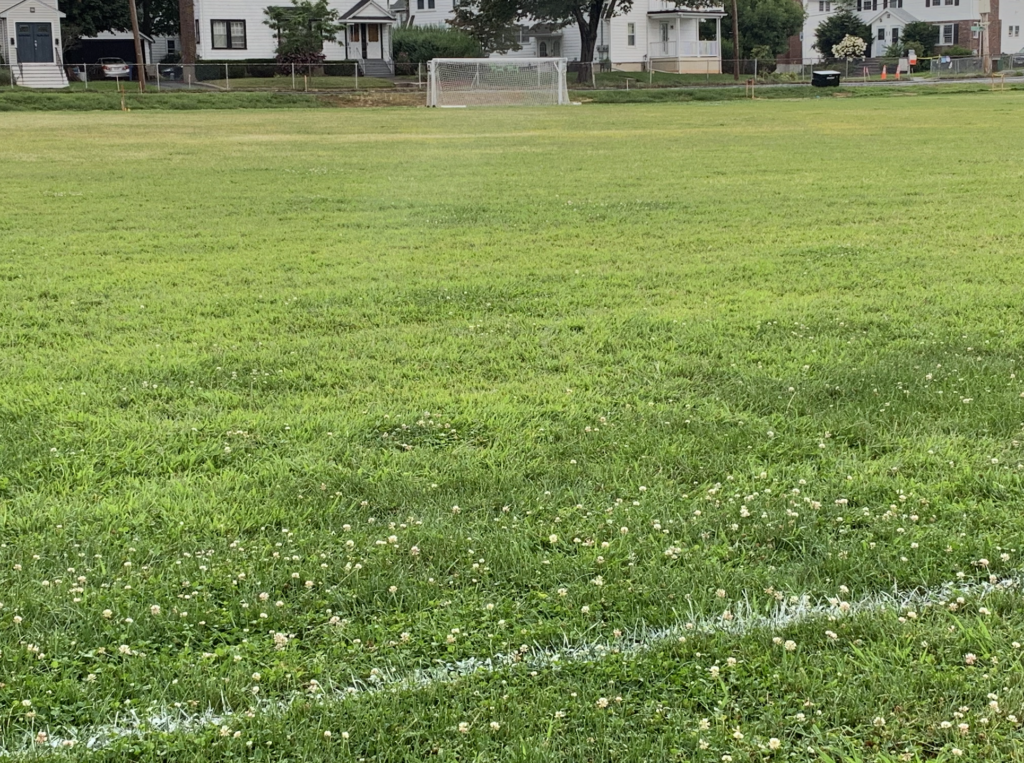Photo: In the black
After two misses in which the budget for the new Belmont Middle and High School recorded deficits of $30 million in April and $19 million in late August, it was with a bit of trepidation for the school’s Building Committee to hear the final budget estimate from the design team during the committee’s meeting on Tuesday night, Nov. 5.
With the development at the benchmark 90 percent of all bids, the project design budget was announced as being … in the black by $300,000.
Whew!
“This is excellent,” said Bill Lovallo, chair of the committee which this Friday will send a dense binder holding all of the project’s 1,300 drawings and financials to the Massachusetts School Building Authority, which is partnering with the town on constructing the $295.2 million, 451,575 square foot school.
“Our final estimated check says that we are on budget,” he told the committee, noting that the final figure was the average of three estimations from each of the design team; architect Perkins+Will, general contractor Skanska and owner’s project manager Daedalus.
Lovallo said he is confident that the remaining contingency funds – about $10 million – will protect the project against escalating costs or construction overruns. He also said that the design team is receiving an interest in the number of firms interested in bidding on the project.
With the budget appearing stabilized, the committee will return in two weeks to discuss possibly bringing back approximately a dozen or so items trimmed during the earlier value engineering dubbed the bid alternative process.
“We want a mechanism by which when we bid and the price has come in a little higher than we expected we have the ability to accept the bids and if they come in a little lower than expected, we could make adjustments to add things that we took out at 60 percent,” said Lovallo, who noted that already Skanska is currently finding additional cost savings in the construction of the school’s facade.
At the Nov. 21 meeting (at 7:30 a.m. in the Belmont Art Gallery in the Homer Building), the committee will take a pared down list of items and rank each item in the committee’s preference of being returned to the building project, ie. the item selected number one will be the first added back with any additional funds.
It’s likely most items on the list will seem mundane – such as tiles and ceiling panels – but they have been identified by several committee members as important components to the educational goals and to the appearance of the school.
A popular item to bring back is the orchestra pit whose campaigners came out to support before the committee last month. Solar power advocates continued their public participation to hold the committee to earlier commitments to keep solar arrays in the building program, although Lovallo said the arrays will not be on the Nov. 21 list since it will likely one of the very last items bid in three years time.
